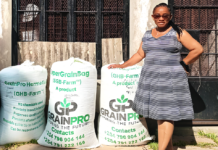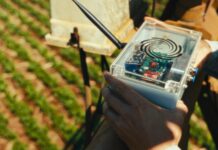Climate change impacts and rising energy costs are increasingly burdensome to Africa’s agricultural sector. While greenhouses have delivered a promising solution to safeguard crops from unpredictable weather conditions and prolong growing seasons, farmers have had to explore alternative heating solutions that minimize environmental impacts and reduce costs. From incorporating renewable energy to employing artificial intelligence, they can revolutionize greenhouse management, optimize resource availability and enhance productivity.
Understanding Greenhouse Heating Requirements
Greenhouse heating requirements vary across African countries, as climate differs with the continent’s diverse topography. Ethiopian temperatures range from -15 degrees Celsius in the highlands and 25 degrees C in the lowlands — about 5 degrees Fahrenheit and 77 degrees F, respectively. The cooler weather demands more intensive heating measures to ensure plant growth. Elsewhere, extreme heat waves result in fewer heating needs and more ventilation.
The size of the greenhouse and the type of plants it holds also dictate ideal temperatures. For instance, cool-season crops thrive in at least 50 degrees F, while warm-season crops like tomatoes and peppers require about 65 to 70 degrees F.
Indoor climate regulation is key to growing produce efficiently in a greenhouse. Once sunlight penetrates the glass or plastic encasement, it becomes trapped inside, where the plants and soil absorb the light and expel heat. Today’s greenhouses are much loftier than conventional ones and hold more air to stabilize temperatures. In some situations, they need help generating and maintaining heat.
Low-Cost, Eco-Friendly Heating Solutions
Many farmers believe warming a greenhouse is an expensive undertaking. However, they can explore several budget-friendly, environmentally sound and technologically advanced solutions for healthy indoor crops.
Renewable Energy Integration
Because of its proximity to the equator, Africa has excellent solar potential, allowing renewable energy integration in greenhouses. According to one study, most of South Africa receives 2,500 hours of sunlight, with a mean solar irradiation of 220 watts per square meter.
Farmers can use solar heaters and do-it-yourself systems to generate heat and save energy and money. For DIY mechanisms, one only needs lumber, transparent material, a black aluminum window screen, and basic hardware and tools. The DIY solar heater can produce 87-104 degrees F on partly cloudy and sunny days.
Biomass heating is another renewable solution using agricultural waste and wood pellets. Growers can convert nearly all the pellets into heat energy without leaving behind waste, helping to save millions of tons of carbon dioxide (CO2) emissions from conventional fossil fuels.
Passive Solar Heating
Farmers can achieve passive solar heating by positioning greenhouses in the south or southeast direction to maximize daytime sun exposure. Another way to let in more light is to opt for ultraviolet-resistant glazing materials, such as polyethylene and polycarbonate.
Some growers increase thermal mass with water barrels, mud bricks, stone, and concrete to store heat during the day and release it at night. This approach is a much more efficient and budget-conscious solar storage method than costly solutions available on the market.
Composting
Converting organic materials into compost requires temperatures of at least 130 degrees F, which will kill most harmful pathogens. Allowing it to heat to 140 degrees F eradicates most weed seeds.
Considering that nearly 40% of Africa’s land mass is used for agriculture, farmers have plenty of material readily available for composting, from crop residues to livestock manure. Kitchen waste is also conducive to building a compost heap for a greenhouse.
Growers can induce heat by transferring the hot compost to the soil indoors — this is especially advantageous for plants to grow longer into the season in cooler climates. Of course, the enriched dirt releases CO2 to encourage photosynthesis and healthier crops. Compost piles near or under greenhouses can also create passive heat through thermal transfer.
Insulation
Because Africa’s climate varies so much, insulating greenhouses is crucial for reducing heat loss, especially when temperatures drop in the evening. Farmers can source recycled or repurposed materials, clay, mud bricks and filled sacks to seal gaps and cracks around the structure and keep costs low.
Thermal screens are highly insulating. Research suggests using two layers of screens can save 58.2% of the energy used with conventional heating. Meanwhile, three layers reduce heating needs by 70%.
AI Technology
The rise of AI and machine learning (ML) technologies is critical in agriculture worldwide. Farmers can use smart sensors to measure and monitor soil moisture and temperature in real time, adjusting greenhouse conditions to optimize plant growth. AI algorithms also analyze weather forecasts for precision irrigation, helping set schedules, conserve water and foster healthy harvests — a critical solution for water-scarce regions throughout Africa.
Two popular ML technologies for greenhouses are Artificial Neural Networks (ANNs) and Support Vector Regression (SVR). ANNs use processes similar to the human brain to identify patterns, while SVR collects vast datasets to predict temperature and humidity. Decision Trees and Random Forests can also foretell crop yields and quantify data variabilities to improve greenhouse environments.
Do Greenhouses Need Ventilation?
Although heat is critical for greenhouse growth, too much could harm crops. In recent years, Africa has experienced extreme heat waves, posing significant risks to its agricultural industry and food security. From March to April 2024, the Sahel and West Africa saw temperatures reach over 45 degrees C — about 113 degrees F. On April 3, 2024, Kayes in Mali registered 48.5 degrees C, or 119.3 degrees F.
Proper ventilation is necessary in greenhouses to manage indoor temperature, humidity levels and air quality, particularly in areas with prolonged heat and drought. Integrating vents and openings will provide much-needed airflow, while some growers might use fans and blowers.
Renewable energy sources could help power these solutions, reducing energy consumption and keeping costs low. A combination of natural and mechanical ventilation methods maximizes efficiency and ensures steady ambient conditions in the greenhouse.
Affordable, Sustainable Warmth for Optimal Greenhouse Farming
African farmers do not have to use expensive greenhouse heating solutions to achieve optimal yields. Implementing cost-effective, sustainable techniques can make growing crops more productive indoors. Likewise, inexpensive AI technologies can help eliminate the guesswork about the most suitable growing conditions, allowing growers to track changes and make informed farming decisions.



 Jane is an agriculture and environmental journalist and the founder and editor-in-chief of
Jane is an agriculture and environmental journalist and the founder and editor-in-chief of 




